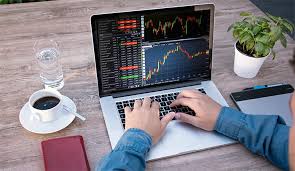Understanding Forex Trading A Beginner's Guide 1684323125

What is Forex Trading?
Forex trading, also known as foreign exchange trading or currency trading, is the process of buying and selling currencies with the goal of making a profit. The forex market is one of the largest financial markets in the world, with a daily trading volume exceeding $6 trillion. Traders engage in forex trading to speculate on the value of currencies, aiming to profit from fluctuations in exchange rates.
For those new to this dynamic marketplace, resources like what is forex trading https://acev.io/ can provide valuable insights and tools to get started.
The Basics of Forex Trading
At its core, forex trading revolves around the concept of currency pairs. When you trade forex, you are always buying one currency while selling another. Currency pairs are categorized into three main types: major pairs, minor pairs, and exotic pairs. Major pairs involve the most traded currencies, such as the US dollar (USD), Euro (EUR), and Japanese yen (JPY). Minor pairs include less traded currencies, while exotic pairs involve a major currency and a currency from an emerging economy.
How Forex Trading Works
The forex market operates 24 hours a day, five days a week, providing opportunities for traders across the globe. Trading begins in the Asia-Pacific region, moves through Europe, and concludes in North America. This continuous cycle allows traders to respond to market developments in real time.
The forex market is decentralized, meaning there is no central exchange like the New York Stock Exchange. Instead, trading occurs over-the-counter (OTC) through a global network of banks, brokers, and financial institutions. This decentralized nature means that forex prices can vary slightly from one broker to another.

Market Participants
Various participants engage in forex trading, including central banks, financial institutions, corporations, and individual traders. Each participant has different motivations for trading:
- Central Banks: They intervene in the forex market to stabilize or increase their currency's value.
- Corporations: Companies engage in forex trading to hedge against currency risk when conducting international business.
- Forex Brokers: Brokers provide trading platforms for individuals and institutions to buy and sell currencies.
- Retail Traders: Individual traders participate in the forex market to speculate and earn profits based on price movements.
Factors Influencing Forex Prices
Various factors can influence currency exchange rates, including:
- Interest Rates: Central banks adjust interest rates to control inflation, which can affect currency value.
- Economic Indicators: Data such as Gross Domestic Product (GDP), employment rates, and retail sales provide insights into economic health and can influence market sentiment.
- Political Events: Elections, trade agreements, and geopolitical tensions can lead to volatility in the forex market.
- Market Sentiment: Traders' perceptions and reactions to news events can create fluctuations in currency prices.
Getting Started with Forex Trading
For beginners looking to enter the forex market, it is essential to establish a solid foundation. Here are some fundamental steps to consider:
- Education: Learn the basics of forex trading through books, online courses, and educational websites.
- Choosing a Broker: Research and select a reputable forex broker that suits your trading needs.
- Opening a Trading Account: Start with a demo account to practice trading without risking real money before transitioning to a live account.
- Creating a Trading Plan: Develop a strategy that includes entry and exit points, risk management, and trading goals.
- Staying Informed: Keep up with market trends, economic news, and other relevant information that may impact your trading decisions.
Forex Trading Strategies

Successful forex traders often employ a variety of strategies to maximize their chances of profit. Some popular strategies include:
- Scalping: A strategy that involves making numerous small trades throughout the day to capture small price movements.
- Day Trading: Traders open and close positions within the same trading day, aiming to profit from short-term price changes.
- Swing Trading: This strategy focuses on capturing price swings over a period of several days to weeks.
- Position Trading: Long-term traders hold positions for weeks, months, or even years, waiting for substantial price movements.
Risks of Forex Trading
While forex trading offers the potential for significant profits, it also carries inherent risks. Factors affecting risks include high leverage, market volatility, and potential loss of invested capital. Traders should understand risk management techniques, such as setting stop-loss orders and adjusting position sizes to mitigate losses.
The Role of Technology in Forex Trading
Technology has transformed forex trading, with advancements such as algorithmic trading, real-time market data, and mobile trading apps. The use of trading platforms allows traders to access global markets, execute trades quickly, and perform technical analysis with ease.
Conclusion
Forex trading presents exciting opportunities for those willing to invest the time in learning and practicing their skills. By understanding the fundamentals of the market, developing a solid trading strategy, and managing risk effectively, anyone can embark on a journey into the world of currency trading. Remember, success in forex trading comes from continuous learning, discipline, and adaptability to changing market conditions.
